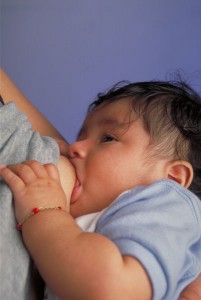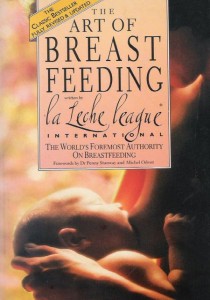Ever since infant formula was invented in 1867, it has taken man rather a long time to come around and agree with nature that her way is, indeed, the better way.
Study after scientific study have now established that breastfeeding is far superior to bottle-feeding, with breastfed babies shown to have lower incidences of all sorts of illnesses and disease; and higher intelligence to boot.
From diarrhoea to respiratory problems, ear infections, asthma, leukemia, childhood cancer, juvenile diabetes, obesity and allergies, breast-fed babies have greater levels of immunity than their bottle-fed counterparts.
Back in 1999, researchers from the University of Minnesota Cancer Center discovered that breastfeeding lowered the risk of some forms of childhood leukemia by up to 30 per cent.
In 2008, a BYU-Harvard-Stanford research team identified a molecule that they said was key to the mother’s ability to give her baby immunity to intestinal infections, though her breast milk. This recent finding explains earlier studies, which showed that bottle-fed infants were twice as likely to be plagued with diarrheal problems.
The link between breast milk and immunity is now so widely accepted that the Centers for Disease Control and Prevention is currently telling mothers to breastfeed their infants as a way of protecting them from the H1N1 flu.
That same year, in what was the largest randomised study ever of breastfeeding, a McGill University research team, which followed the same group of 14,000 children for 6.5 years, reported that at 6.5 years breast-fed children scored 7.5 points higher on verbal intelligence tests, 2.9 points higher on non-verbal intelligence tests and 5.9 points higher on general intelligence tests.
As a confirmation of the link between breastfeeding and intelligence, a new 2009 study by Professors Joseph Sabia from the American University and Daniel Rees from the University of Colorado Denver found that children who were breastfed as babies were more likely to do well in high school and to go on to attend college.
Every additional month of breastfeeding was associated with an increase in high school grade point averages of 0.019 points and an increase in the probability of college attendance of 0.014.
While infant formula is similar to mother’s milk in composition, it is not a perfect match. According to the U.S. Food and Drug Administration, human milk contains at least 100 ingredients not found in infant formula. It also says that no baby is allergic to his mother’s milk.
![]() A word of caution, however: babies can be allergic to something that mum has eaten.
A word of caution, however: babies can be allergic to something that mum has eaten.
Milk is species-specific and mother’s milk contains just the right amounts of fatty acids, lactose, water and amino acids for baby’s optimum growth and development.
Consider this: A calf has to be up and on its feet within a few hours of its birth while a human baby does not walk till he is about a year old. Calves double their birth weight within two months while human babies take about six months.
In contrast, human babies continue to add new brain cells until they are about nine months old in a process that is never again repeated. Another important development for babies is myelination, or the ongoing insulation of the nerves from one another, which promotes motor coordination.
Cow’s milk, on which most infant formulas are based, is therefore necessarily high in protein that is hard for humans to digest. This explains why formula-fed babies stay full longer than their breast-fed counterparts.
Breast milk, on the other hand, is high in fat and DHA – both important components for brain and nervous system development. The vitamins and minerals in breast milk are more easily digested, absorbed and utilised. Remember we are what we absorb, not what we eat.
Breastfed babies have lower obesity risks because they cannot be overfed. Breastfed babies determine for themselves the amount of milk they need. Take your cue from your baby. You know he’s had enough when he turns his head away.
Breast-feeding also promotes better oral and jaw development leading to straighter teeth and better speech. Suckling on the breast, as opposed to sucking on the bottle, takes 60 times more energy and gives the jaw and face muscles a good workout.
The consistency of breast milk changes from the beginning of a feed to the end. The foremilk, which collects in the breasts in-between feeds, is thin and serves to quench baby’s thirst.
 The hindmilk is creamy and contains most of the fatty globules and proteins to meet baby’s developmental needs. This hindmilk comes directly off the production line, so to speak, being manufactured by the breasts even as baby suckles.
The hindmilk is creamy and contains most of the fatty globules and proteins to meet baby’s developmental needs. This hindmilk comes directly off the production line, so to speak, being manufactured by the breasts even as baby suckles.
The key is let your baby suckle for as long as he wants, then offer the other side. If you try to determine the length of time that your baby should nurse on each breast then your baby might not be getting to the hindmilk, which he needs for his growth.
But more than the protection against disease and the higher intelligence, breastfeeding is about nurturing your child in a way that affirms his right to be here. All the cuddling and holding that breast-fed babies receive bolster their self-esteem and set the stage for their achievements in later life.
Remember: cow’s milk is for calves; human milk is for human babies.







